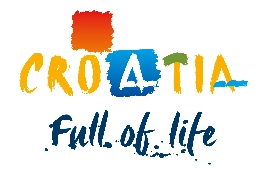
en


Accessibility tools
Large text
Invert color
Black & white
Letter spacing
Line spacing
Large cursor
Reset tools

Add to My Journey

Share
Art and culture
Motovun
Motovun’s cultural heritage
The medieval town of Motovun has been added to the UNESCO’s World Heritage Tentative List and awarded a status of the protected cultural monument due to the fact that it houses as many as 26 protected cultural monuments. Keep reading to find out more about Motovun’s 10 most significant cultural attractions you wouldn’t want to miss out on!
Town walls
Its famous town have walls long protected the town dwellers from outer attacks. Today they are the best preserved fortification system in Istria. Numerous visitors and locals enjoy walking along the town walls opening to the view of the river Mirna and the green landscapes surrounding Motovun.
2. Parish Church of St Stephen the First Martyr
It was erected in the place of an older Romanesque church, most probably built on the remains of an ancient basilica. Built from 1580 to 1614 to the design of famous Venetian architect Andrea Palladio, the church got its present-day appearance in the late 18th century. As soon as you enter, you’ll be amazed not only by its elaborate structure, but also by the wall paintings and furnishings. The Altarolo Colleoni, a portable altar from the famous naval Battle of Lepanto between the Holy League and the Ottoman Empire, and the Holy Thorn, a thorn from the Crown of Thorns, are among the most important religious items kept in the vestry.
3. Motovun’s bell tower
The 27-metre tall gap-toothed bell tower dominating the landscape of the Mirna river valley was built in the 13th century in the Romanesque and Gothic styles as the main lookout tower. In case of danger, watchful guards would start a fire on the roof platform to alert the nearby castles. Smoke signals were used during the day. Out of the five towers, depicted on both the oldest and contemporary coat of arms, the bell tower is the only one that has been preserved.
4. Municipal palace
It is the best preserved Romanesque public building not only in Istria, but also in Croatia. Most of it was built in 1248 to serve as a town hall, and during that period it also played an important defensive role. Even though it has been rebuilt many times over the centuries, the original Romanesque mullioned windows with two lights can still be seen on its façade. Today it houses local self-government offices, Pet kula art gallery, Bauer cinema, Antico medieval printing house, tourist information centre, etc.
Main town gate
Built in the 14th century, the gate features both the Romanesque and Gothic elements. It was a strategic defence point, and also the only entrance to the town. It consisted of two wooden frames and hidden arrow slits, which protected access to the gate. There are three coats of arms above it: Motovun’s coat of arms, the lion St Mark, and that of the Memo family. The gate connects the upper with the lower square.
6. ‘New gate’ tower
The 1607 renovation changed the ‘New gate’ tower to its present-day appearance, as evidenced by the inscription above the exit. It is connected to the municipal palace and the town walls. Town dwellers drilled openings above the former town gate to protect themselves: they used them to toss heavy objects or spill hot water and oil on invaders. In 1931, a lapidarium was created in the vaulted tower passage. The items displayed include Roman tombstones found near Motovun and the town’s oldest coats of arms.
7. Loggia
The present-day town loggia was built in the 17th century on the lower square (today know as Josef Ressel Square). Some believe that the older loggia, first mentioned as ‘Lobbia Maior’ in 1331, once stood within the perimeter of the Polesini palace, inside the first layer of defensive walls. It was a place where decisions were announced, judgments reached, and important agreements concluded. But it was also a place where youngsters would exchange shy glances. Due to a stunning view of the Mirna river valley, the Motovun Forest and scenic sunsets, it is today one of the most popular ‘instagrammable’ locations in Motovun.
8. Motovun’s squares
There are two squares in Motovun. Their names would often change, but local inhabitants have always referred to them as the lower and the upper square. Nowadays, the first one is known as Josef Ressel Square. It has been named after a 19th-century Motovun forester and inventor who became famous for having invented the ship’s propeller. The lower square is in fact a platform built on an embankment between the municipal palace and the second layer of the town walls, where today you can find many restaurant terraces with wonderful views of the Mirna river valley, the Motovun Forest and spectacular sunsets. The upper square, which is also the town’s main square, bears the name of Andrea Antico or Andrija Motovunjanin. Born in Motovun around 1480, he was a famous publisher, music printer and composer. Below the main square there is a large cistern, with a well on each side – one from the 15th and the other from the 14th century. The second one features the town’s oldest Venetian stone lion from 1332. The main square is the most beautiful outdoor stage in Motovun.
9. Motovun’s alleys
A stroll through the charming streets of Motovun resembles a walk in time. Borgo (lower town) and Gradiziol (suburb), the two main streets on each side of the town, will take you to its highest point. With 1052 stairs, Borgo boasts the longest staircase in Istria, running from the bottom of the hill all the way to the top of Motovun. The street entrance features a Gothic gate, one of the protected cultural monuments. On the other side you will find Gradiziol, the most recent building in the old town that got its present-day appearance in the 18th century. Make sure to visit Rialto, Fossal, Morteanijeva ulica, Kandlerova ulica, and other picturesque alleys that have kept their authentic appeal.
10. Motovun’s churches
The old town is home to a parish church, but also four smaller ones. The Church of the Blessed Virgin Mary of the Servite Order is situated at the entrance to Gradiziol, together with a convent that was built from 1580 to 1584. There you can find a precious organ by Callido from 1797, waiting to be returned to the parish church. On the opposite side of the old town, at the entrance to Borgo, there lies the Church of St John the Baptist and Our Lady of the Gate, erected in 1521. Halfway down Borgo is the Church of St Anthony of Padua and St Cyprian, first mentioned in 1454 as St Cyprian’s Church. It was completely reconstructed in the late 19th century as a votive offering to end the plague.
Tags:
#art and culture

Subscribe to our newsletter
Keep up with the news

In all colours of Northwest Istria

Follow us
Additional Information


©2024 Colours of Istria. All rights reserved. No part of this site may be reproduced without our written permission.



©2024 Colours of Istria. All rights reserved. No part of this site may be reproduced without our written permission.
















